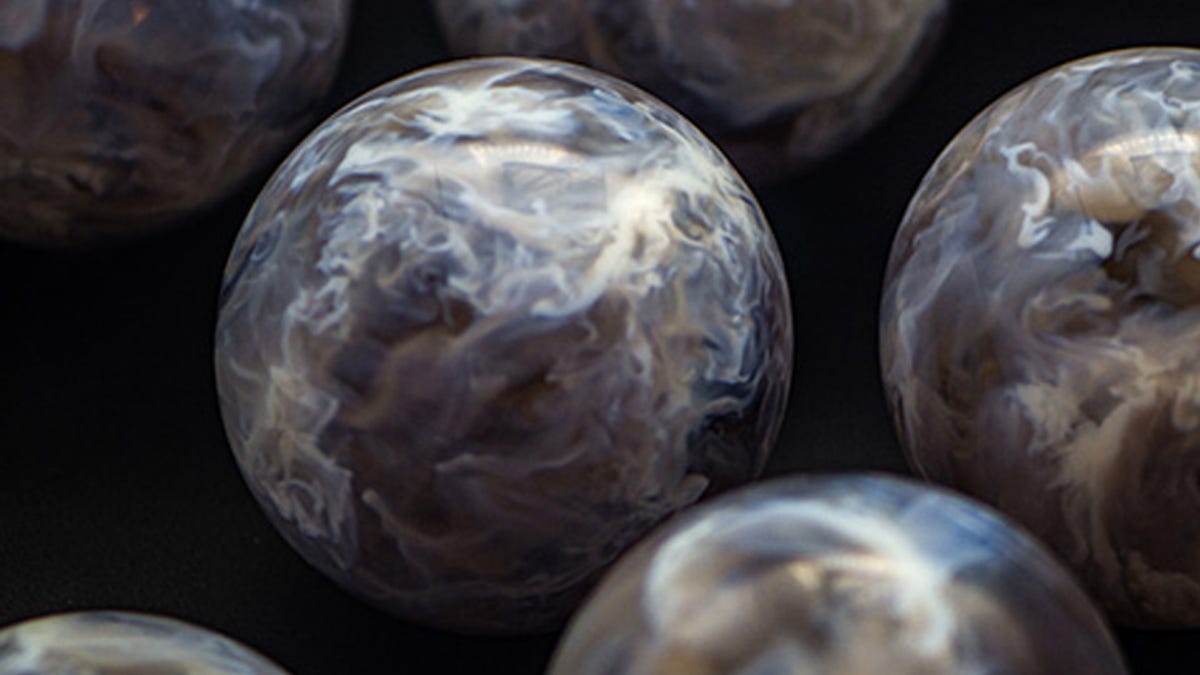Astronomers 3D-print stellar nurseries you can hold in your hand
There's a beautiful new way to visualize the places where stars come from.
Nia Amara is both an astrophysicist and an artist. Those two passions have united in a project that's helping scientists visualize stellar nurseries, the massive clouds of dust and gas where stars are born.
Amara and her team 3D-printed polished, baseball-size orbs that look like oversized marbles with swirling patterns inside. "We wanted an interactive object to help us visualize those structures where stars form so we can better understand the physical processes," said Imara in a University of California, Santa Cruz, statement Thursday.
The models are made from opaque resin deposited inside transparent resin, which makes it look like the cosmic clouds are suspended within each globe. The researchers also made half-spheres that give a view into the cross sections of the nurseries.
The patterns came from running simulations of star-forming clouds that show how different processes affect stellar nurseries. Subtle differences in the simulation results stand out when seen in 3D.
"Just aesthetically they are really amazing to look at, and then you begin to notice the complex structures that are incredibly difficult to see with the usual techniques for visualizing these simulations," said the Flatiron Institute's John Forbes, co-author of a paper on the project published in The Astrophysical Journal Letters in August.
We're used to viewing cosmic wonders like galaxies and nebulae on screens. Now imagine those celestial sights being rendered in a way that lets you hold them up, turn them and see into them. That's a marvelous possibility suggested by Amara's clever blend of astronomy and art.
Follow CNET's 2021 Space Calendar to stay up to date with all the latest space news this year. You can even add it to your own Google Calendar.


